K-12 Teacher Training
OVERVIEW
Teacher training, also known as Professional Development for Teachers, is undergoing dramatic changes. Not only has technology invaded the classroom but new ways of looking at testing and assessment is driving a whole new model of teaching. Many states and their school districts across the country are trying to come up with training that will allow effective teaching to comply with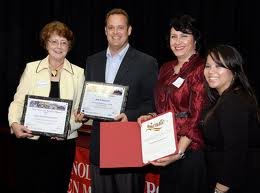 NCLB requirement for teacher evaluations.
NCLB requirement for teacher evaluations.
Because teachers must also learn the new CCSS curriculum, which can take time and money, school districts have had to find hours over the summer or during the school year to train teachers, and in some cases pay them for the extra time or pay substitutes to replace them in class. The cost of sending educators to conferences or hiring outside trainers can also be steep.
This section takes a look technology in the classroom and its possible effects on teaching; Common Core teacher training at the state, district and university levels; High-value training; and a look at how technology can impact teacher training.
EDUCATIONAL TECHNOLOGY
Similar to learning a new task or trade, special training is vital to ensuring the effective integration of classroom technology. The current school curriculum tends to guide teachers in training students to be autonomous problem solvers. This has become a significant barrier to effective training because the traditional methods of teaching have clashed with what is expected in the present workplace.
Today’s students in the workplace are increasingly being asked to work in teams, drawing on different sets of expertise, and collaborating to solve problem. These experiences are not highly centered on in the traditional classroom, but are twenty-first century skills that can be attained through the incorporation and engagement with technology. Changes in instruction and use of technology can also promote a higher level of learning among students with different types of intelligence.
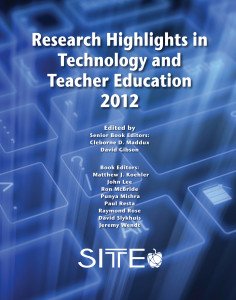 Therefore since technology is not the end goal of education, but rather a means by which it can be accomplished, educators must have a good grasp of the technology being used and its advantages over more traditional methods. If there is a lack in either of these areas, technology will be seen as a hindrance and not a benefit to the goals of teaching.
Therefore since technology is not the end goal of education, but rather a means by which it can be accomplished, educators must have a good grasp of the technology being used and its advantages over more traditional methods. If there is a lack in either of these areas, technology will be seen as a hindrance and not a benefit to the goals of teaching.
Another major issue arises because of the evolving nature of technology. Teachers may find themselves acting as perpetual novices when it comes to learning about technology. This is because technology, including the Internet and its range of applications, is always in a state of change and teachers must attempt to keep current. The ways in which teachers are taught to use technology is also outdated because the primary focus of training is on computer literacy, rather than the deeper, more essential understanding and mastery of technology for information processing, communication, and problem solving.
New resources have to be designed and distributed whenever the technological platform has been changed. However, finding quality materials to support classroom objectives after such changes is often difficult even after they exist in sufficient quantity and teachers must design these resources on their own. The study by Harris (Harris, J., Mishra, P., & Koehler, M. (2009) “Teachers’ Technological Pedagogical Integration Reframed”) notes that the use of random Professional Development days is not adequate enough in order to foster the much-needed skills required to teach and apply technology in the classroom. Learning, therefore, becomes and on-going process, which takes time and a strong commitment among the community of educators.
Teacher training faces another drawback when it comes to one’s mindset on the integration of technology into the curriculum. The generational divide might also lead to a generational bias, whereby 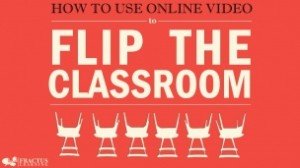 teachers do not feel the need to change the traditional education system because it has been successful in the past. This does not necessarily mean it is the right way to teach for the current and future generations. Considering the fact that today’s students are constantly exposed to the impacts of the digital era, learning styles and the methods of collecting information has evolved.
teachers do not feel the need to change the traditional education system because it has been successful in the past. This does not necessarily mean it is the right way to teach for the current and future generations. Considering the fact that today’s students are constantly exposed to the impacts of the digital era, learning styles and the methods of collecting information has evolved.
To illustrate this concept Jenkins (Jenkins, H. (2009) “Confronting the Challenges of Participatory Culture: Media Education for the 21st Century states’), “students often feel locked out of the worlds described in their textbooks through the depersonalized and abstract prose used to describe them,” whereas games can construct worlds for players to move through and have some stake in the events unfolding. Even though technology can provide a more personalized, collaborative, creative, and yet informative approach to learning, it may be difficult to motivate the use of these contemporary approaches among teachers who have been in the field for a number of years.
TEACHER TRAINING IN THE USE OF SUPPLEMENTS
(The following is an abstract from “Games for a Digital Age”)
Teacher support goes a long way toward determining the long-term success of any supplement in the classroom. However, according to Victoria Van Voorhis, CEO of Second Avenue Learning, “Teachers can also be a big barrier. They are not familiar with gaming and are unclear about how to use games and supplements in the curriculum—are they for independent practice, group work, or integrated learning?” Professional development to familiarize teachers with supplements and games is essential for ensuring that they can successfully integrate learning supplements into their classrooms.
Teachers themselves include among their top four priorities for further professional development “using technology in the classroom.” As more teachers are becoming supportive of using supplements and games in the classroom, initial as well as ongoing professional development support will likely be paired with the purchase of new digital curriculum products such as interactive tools or learning games. In a recent survey sponsored by the Joan Ganz Cooney Center majority of teachers first learn about using digital games in the classroom from in-service professional development workshops (46%), followed by self-directed study (35%).
supplements and games in the classroom, initial as well as ongoing professional development support will likely be paired with the purchase of new digital curriculum products such as interactive tools or learning games. In a recent survey sponsored by the Joan Ganz Cooney Center majority of teachers first learn about using digital games in the classroom from in-service professional development workshops (46%), followed by self-directed study (35%).
In 2012, Congress appropriated $3.1 billion for teacher programs that are designed to improve the quality of teachers in the K-12 classroom. These funds account for 4.5% of the total discretionary budget of the U.S. Department of Education. The programs include monies to support professional development in technology integration. The funds are distributed by the U.S. Department of Education to states and local education agencies, and in some cases they are distributed directly to individual teachers.
THE EFFECTS OF USING TECHNOLOGY IN THE CLASSROOM
(The following is an abstract from “Will technology improve teacher-student relationships, or hurt them?” Hechinger Report 10/15/2013)
Hoping for improved learning by increasing student engagement school districts across the U.S. have embraced technology. A game which allows students to use a virtual scalpel to prod and poke muscles and blood vessels in the human body, for instance, is likely to be more attractive to a ninth grade biology class than an anatomy lecture.
In addition to the fact that such games provide instant feedback that provides real-time data on the student’s performance proponents of such individualized instruction say the technology allows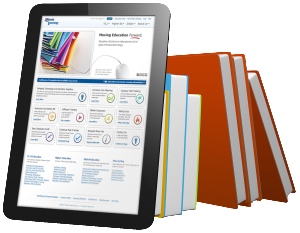 teachers to assess how their students are doing in class more accurately, showing teachers how to help students in a more targeted fashion.
teachers to assess how their students are doing in class more accurately, showing teachers how to help students in a more targeted fashion.
But is expanding access to iPad, laptop, and smart phone screens in school taking away from human interaction between teachers and students? And does it actually lead to more learning?
Because there is currently little research on the impact increased technology use may have on the teacher-student relationship we don’t know the answer to these questions yet. But what is known is that the effective use of technology depends on good human relationships.
Greg Anrig, vice president of policy and programs at The Century Foundation, an independent progressive think-tank say that a study has shown that two or more students working together and sharing one computer learned more than an individual student working on a computer alone. Other research shows that technology can help improve student achievement but only in conjunction with other factors including effective teacher development, better modeling by teachers and student collaboration when using these devices.
The question is are teachers going to be integrating them into what they’re already doing ideally in ways that are creating more effective interactions rather than substituting for them? It is not known yet in a lot of ways what some of these new devices will be able to do with the learning process but it’s definitely a worry if it means that they’ll take over for what teachers can do.
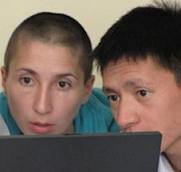 What Anrig concerns most in the promotion of education technology is the assumption that just handing kids new devices will be sufficient for them to make gains in learning, when there is no research showing this to be the case. Jack Schneider, an assistant professor of education at the College of the Holy Cross in Massachusetts, agrees.
What Anrig concerns most in the promotion of education technology is the assumption that just handing kids new devices will be sufficient for them to make gains in learning, when there is no research showing this to be the case. Jack Schneider, an assistant professor of education at the College of the Holy Cross in Massachusetts, agrees.
“Look at the disaster in L.A. schools right now — they purchased 600,000 iPads and are having all kinds of problems,” he said, referring to students who learned to bypass the security system on the districts’ iPads in order to access restricted sites. The iPads have now been taken away from some school campuses. Relationships are what matter in schools. Any deep exploration of successful schools reveals relationships to be at the core — whether at private schools, public schools, elementary schools or high schools.
Schneider, a former high school history teacher said that former students do not reach out to him years later to compliment him on how he taught a particular history lesson but to thank him for being there for them as a good role model. Schneider argues education reform should include ideas for how teachers can create meaningful relationships with their students, instead of only focusing on how to increase achievement.
“To be clear: I am not saying that academic rigor is in any way a matter of small importance,” he wrote. “Instead, what I am saying is that our current policy dialogue gives the distinct impression that academic rigor is the only thing that matters.”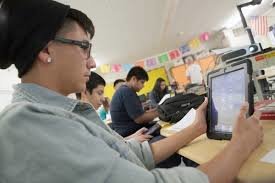
The rise of technology in the classroom makes this concern more urgent: Will an increasing fixation on using data to identify our students’ strengths and weaknesses cause us to start viewing them as machines that the teacher has to tinker with to produce the desirable numbers?
Anrig says there’s no answer to this yet. But just as more and more technology is being used in the classroom more research is also being done on its impact. Anrig believes the results will show that collaboration between students and teachers in the use of technology — rather than students working on their devices by themselves while teachers stand back and track their progress — is what will lead to real student learning.
COMMON CORE TEACHER TRAINING
With the Common Core standards due to roll out in the 2014-15 school year the push is on to train teachers how to implement the new program. Proponents say the Common Core is better than previous standards in many states because it emphasizes problem-solving and collaboration—skills students will need in the workplace. In many states, students will delve more deeply into fewer topics, allowing more time for them to grasp concepts.
One of the big ideas behind the Common Core is to break down barriers between subjects, encouraging students in math class to write about problems rather than merely turn in a row of numbers. 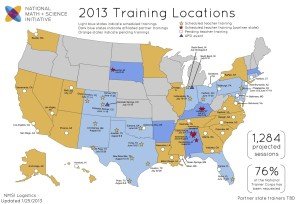 “That’s what I like about Common Core,” says Cicely Woodward, an eighth grade teacher who has been teaching in Nashville for 11 year (see following article), “It’s all about meaning.”
“That’s what I like about Common Core,” says Cicely Woodward, an eighth grade teacher who has been teaching in Nashville for 11 year (see following article), “It’s all about meaning.”
Some organizations, such as the National Council on Teacher Quality, have criticized teacher-training programs for responding too slowly to the new standards. “There’s no evidence that this (the Core) has made its way into the thinking about how to train new teachers,” said Kate Walsh, the council’s president. A June report from the organization, surveying about 1,100 institutions, concluded that only 11 percent of elementary programs and about one-third of high school programs appear to prepare candidates who can successfully teach the Common Core (see “Teacher-training schools under pressure to prepare for Common Core” following).
The CCSS standards, although not a curriculum, do lay out the general English and math skills students should learn by different stages. Schools that follow the standards should also adhere to general-educational principles, such as prioritizing analytical-essay writing over first-person narratives.
That said, educators have a long way to go to adjust to the CCSS. “At this point, most [educators] have moved on from just working to understand what the standards call for,” says Kent Williamson, executive director of the National Council of Teachers of English (NCTE), which will issue a report about the CCSS later this month. “About half our educators work in schools where a plan for standards implementation is shared with the staff.” However, “far fewer than half of schools in CCSS states have purchased ‘standards-aligned’ materials and instructed teachers to use them.” Facing publishers’ vast offerings, “It is far more common for educators to create their own materials and approaches,” says Williamson, though “many don’t feel particularly well supported in doing so.” He adds that educators say their biggest challenge is changing their way of teaching, not the materials themselves. (see: Common Core Initiative/Common Core Implementation)
UNIVERSITY-BASED TEACHING PROGRAMS
In Louisiana, leaders of traditional, university-based teacher-preparation programs say they are making significant changes in line with the Core: Emphasizing literacy across the curriculum; asking their K-12 teacher candidates to design more assessments with multi-step math problems; and teaching them to identify appropriately challenging texts. They are all supposed to be making changes to what is happening in their curriculum.
their K-12 teacher candidates to design more assessments with multi-step math problems; and teaching them to identify appropriately challenging texts. They are all supposed to be making changes to what is happening in their curriculum.
At Tulane University, teacher candidates must now write sample lesson plans that are aligned with the Core. Prospective teachers start with an overview course called Education in a Diverse Society, in which they receive an introduction to the new standards. In their second class, the students attempt to put those standards into practice while writing their first lesson and unit plans; they continue to explore the standards in greater depth as they advance through their methods courses. There’s not a lesson they write without addressing the Common Core.
At Southeastern Louisiana University instructors ensure teacher candidates understand the major shifts under Common Core. The emphasis on non-fiction in the standards and teach their students to evaluate the complexity of a text which is a crucial skill for teachers under Common Core.
 Many of the standards are aligned with the practices and principles of a greater emphasis on curriculum literacy that education professors have long prioritized and have been advocating for years.
Many of the standards are aligned with the practices and principles of a greater emphasis on curriculum literacy that education professors have long prioritized and have been advocating for years.
Some educators worry about K-12 teacher candidate stamina for the rigor in the CCSS. The new the new teacher-evaluation systems and a new set of standardized tests have all come out within a short period of time. The teaching profession has been impacted by the rolling out so many things at once. It may have a backlash where there are not enough certified teachers.
Louisiana’s Non-Traditional Teacher Prep
Louisiana has authorized six alternative-certification programs for teachers whose bachelor’s degrees are not in education, and New Orleans has a large proportion of teachers who are involved in nontraditional programs which are also active in Common Core. But with their participants employed full-time as classroom teachers, and with individual districts developing their own curricula, they are trying to complement what their teachers are doing in their home schools.
The New Orleans and South Louisiana Teach for America chapters are offering Common Core workshops and some school districts provide locally driven support on Common Core. Corps members are deeply engaged in the standards. There is a hunger – the more they know about these rigorous expectations for kids, the more excited they get.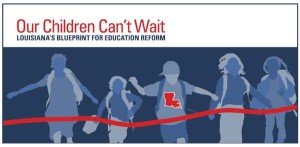
Some teacher who have signed up for a TFA Common Core workshop feel they have learned the most so far by participating in resources available outside TFA, such as the Literacy Design Collaborative. The teachers, who have worked on the district’s Common Core curriculum-writing team, are collaborative group of educators delving into the standards and rewriting the curriculum to meet those standards.
The six alternative-certification programs in Louisiana offer a one-year master’s degree that’s a mix of online and in-person classes to just over 30 participants. They are at varying levels of familiarity and comfort with the standards but elementary teachers generally seem to be more informed. The majority of the program’s curriculum is focused on general pedagogy, not content knowledge, but teachers take daylong workshops on “Understanding the Common Core for Mathematics” and similar topics.
The program’s staff met with the leaders of all its participants’ schools to find out what they were doing on Common Core, and their approaches seemed to be lining up well. Staff said it has helped that since the program started in Common Core states New York and New Jersey, they’re familiar with both the standards and the Engage NY curriculum that some Louisiana schools are using. The expectation is that what they are doing in class will translate into the classroom immediately.
THE NATIONAL PERSPECTIVE ON TEACHER TRAINING
 Across the country, most teacher-preparation programs scarcely mention the Common Core in recent course syllabi, said the National Council on Teacher Quality. Half the surveyed programs have no reference to anything Common Core related. The survey is to be updated over the next year, focusing on 100 programs nationwide that had course syllabi available for a more-detailed analysis.
Across the country, most teacher-preparation programs scarcely mention the Common Core in recent course syllabi, said the National Council on Teacher Quality. Half the surveyed programs have no reference to anything Common Core related. The survey is to be updated over the next year, focusing on 100 programs nationwide that had course syllabi available for a more-detailed analysis.
The researchers will look in the syllabi for key words that suggest an attempt to teach Common Core-related skills and values, such as lessons on text-complexity analysis. For example, the standards go into considerable detail on how teachers should determine which grade level to teach a text. Following the guidelines, classics like “Narrative of the Life of Frederick Douglass” would be considered more appropriate for middle school than high school. Researchers will also look for items such as teaching history through a literary focus; identifying informational texts; or forming evidence-based arguments.
A lecture on Common Core is not enough. Leaders of education-training programs say the Common Core is incorporated throughout classes and cannot always be easily detected in course or lesson titles. The professors don’t put in their syllabus that this is part of the Common Core it’s just ingrained. The new standards might prompt some changes in course titles over time, but only after a lengthy curriculum-review process that can take up to a year. In the short term, course content has to be revised.
High-Outcome Practices
(This is an abstract from an article by Susan Furth)
Smaller classroom sizes are not only and advantage to students but it also allows teachers the ability to work without students doing lesson planning, observing master teachers, and working to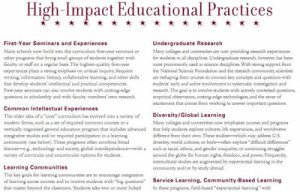 improve teaching. Other teachers come to the teacher’s classroom to offer ideas, the teacher’s teaching is videotaped (see Blended-learning) so the teacher can see their body language and what they are doing, and selected students are interviewed to see what teaching method are most effective. Many teachers wanted to try it. But there was no money to support more common planning or lesson planning.
improve teaching. Other teachers come to the teacher’s classroom to offer ideas, the teacher’s teaching is videotaped (see Blended-learning) so the teacher can see their body language and what they are doing, and selected students are interviewed to see what teaching method are most effective. Many teachers wanted to try it. But there was no money to support more common planning or lesson planning.
Wouldn’t it be better to take the large sums of money the state spends on standardized testing and support high-outcome practices instead? And support means a constant professional development program, not just one or two sessions.
Social Media as a Teacher Training Tool
(The following is an abstract from Sara Garlands’ article “Can Twitter Replace Traditional Professional Development?” Hechinger Report – 8/1/2012
Since social media is invading all aspects of our lives it only seem fitting that someone would come up with the idea of having Twitter and Facebook become part of teacher training.
Instead of enduring hours-long workshops a few times a year, teachers could reach out to peers on the Internet in real time for advice on things like planning a lesson (or salvaging a lesson that’s going wrong), overcoming classroom management problems, or helping students with disabilities.
“Being connected [through social-networking sites] is an opportunity for growth anytime, anywhere,” said Steve Anderson, director of instructional technology for the Winston-Salem/Forsyth County Schools in North Carolina, speaking yesterday at the second annual #140edu conference in New York, a reference to Twitter’s 140 character limit for tweets. A teacher can go on Twitter at any time and “learn 10 new things.”
For-profit companies, nonprofits and universities make lot of money providing training to schools, but little research exists on what types of professional development for teachers work best. Increasingly, schools and districts are adopting what experts say are more promising ways of training teachers that involve more coaching and teacher collaboration.
But some educators who attended the #140edu conference want to push the envelope further, to make teacher training even more individualized and self-directed. Among the attendees were teachers and principals who keep blogs documenting their daily travails and successes in the classroom, which work as guideposts for others and forums where they can glean tips. Some have thousands of Twitter followers and Facebook friends.
Kyle Pace, an instructional technology specialist for the Lee’s Summit School District, near Kansas City, gave an example of how personal networks and crowd-sourcing on the Internet could improve on the old ways of training teachers.
“A teacher could be teaching a lesson on the Civil War. That lesson could bomb. They could go to their network, pose a question, and ask for a resource. In the next period they could have new resources, things to try immediately,” he said. “Traditional professional development can’t offer that immediacy of being a connected educator,” Pace added.
In-person interaction shouldn’t be completely discarded, however, said Eric Sheninger, principal of New Milford High School in northern New Jersey, who says he has revolutionized his school partly through help from people he met via Twitter. “I value my face-to-face connections more than I do my virtual ones,” he said. “Technology flattens our ability to connect with people. It just makes things easier. It’s not the only way I connect with people.”
Indeed, at the conference, a room set aside for in-person mingling and chatting was often more crowded than the auditorium where panelists were giving their talks.
K-12 Teacher Training Articles

Recent Comments